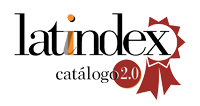LaTeX model for thesis and dissertations at a Postgraduated Program: construction and evaluation of an artifact
DOI:
https://doi.org/10.5380/atoz.v4i2.43554Keywords:
LaTeX, Open source software, High typographical quality, Text editing artifact, Design Science Research (DSR)Abstract
Introduction: LaTeX is a program for creating and editing documents that require a high quality printing output. It has complex characteristics that demand the creation of templates to facilitate its use. The purpose of this article was to create a model of thesis and dissertations in LaTeX, for the Postgraduate Studies Program in Production Engineering at the Paulista University in order to facilitate the students´ inclusion and allowing the presentation of papers within international standards. Method: It was adopted the methodology of Design Science Research (DSR), which provides guidelines for creation or adaptation and evaluation of artifacts, such as software, and others scientific tools. As requirements it was used the manual of academic standards available on the institution website. The evaluation took place through simulations and presentation for students and program faculty followed by a questionnaire applied to 34 respondents. Results: it was found that nearly 40% answered to know the program and 60% was not aware of it. After the presentation, about 32% of respondent indicated the template as being difficult to use, 50% found it reasonable, and 18% responded as “easy”. About 76.5% of the groups formed for analysis, pointed positively as to replace conventional editors for LaTeX, although 23.5%. had a different opinion. The most outstanding variables in favor were: the typographical quality and the concentration on the logical content and facilities. Master's students had greater homogeneity in responses. Conclusion: the proposed template was accepted with enthusiasm, even though the difficulty of use should require a training period.
References
Cauchick, P. A. C. & Fleury, A. C. C. (2012). Metodologia de pesquisa em engenharia de produção e gestão de operações. 2.ed. Rio de Janeiro: Elsevier: Abepro
Delescluse, M., Franconville, R., Joucla, S., Lieury, T., & Pouzat, C. (2012). Making neurophysiological data analysis reproducible: Why and how? Journal of Physiology Paris, 106(3):159–170, Disponível em: www.sciencedirect.com/science/article/pii/S0928425711000374
Flom, P. (2007). Latex for academics and researchers who (think they) don’t need it. TUGboat, 28. Disponível em: https://www.tug.org/TUGboat/tb28-1/tb88flom.pdf
Gomes, I. M. (2005). Manual como elaborar uma pesquisa de mercado. Belo Horizonte: SEBRAE/MG, 2005.
Grätzer, G. (2014). Practical LaTeX. Springer. Doi: 10.1007/978-3-319-06425-3
Guo, H., Tian, X., Yang, F., & Li, X. (2011). A method of adding an attribute into mathml for formula retrieval. In Computer Science and Network Technology (ICCSNT), 2011 International Conference on, volume 3, pages 1390–1393. IEEE. Doi: 10.1109/ICCSNT.2011.6182224
Härdle, W. K. & Simar, L. (2012) Applied multivariate statistical analysis. 3ed. Berlin: Springer. Doi: 10.1007/978-3-642-17229-8
Isaacson, W. (2011). Steve Jobs: a biografia. São Paulo: Companhia das Letras, 2011
Kaneko, M. & Takato, S. (2011). A CAS Macro Package as LaTeX Graphical Command Generator and Its Applications. In 2011 International Conference on Computational Science and Its Applications (ICCSA), pages 72–81. Doi: 10.1109/ICCSA.2011.47
Kottwitz, S. (2011). LaTeX beginner’s guide. Birmingham (UK): Packt Publishing Ltd.
Lacerda, D. P., Dresch, A., Proença, A. & Antunes Jr, J. (2013). Design Science Research: método de pesquisa para a engenharia de produção. Gestão & Produção, 20(4):741- 761. Disponível em: http://www.scielo.br/pdf/gp/v20n4/aop_gp031412.pdf
Lamport, L. (1994). Latex: A Document Preparation System, 2/E. United States: Addison-Wesley Publishing Company Inc.
March, S. T. & Storey, V. C. (2008). Design science in the information systems discipline: an introduction to the special issue on design science research. Management Information Systems Quarterly, 32(4):6.
Oetiker, T., Partl, H., Hyna, I., & Schlegl, E. (2015). A Not So Short Introduction to LATEX 2e. V. 5.05. OETIKER+PARTNER AG Aarweg 15 4600 Olten Switzerland. Disponível em: https://www.ctan.org/tex-archive/info/lshort/english
Schulte, E., Davison, D., Dye, T., & Dominik, C. (2012). A multi-language computing envi- -ronment for literate programming and reproducible research. Journal of Statistical Software,46(3):1-24. Disponível em: http://www.jstatsoft.org/article/view/v046i03
Strokov, I. One more macropackage for typesetting structural formulæ with LATEX. Computers & chemistry 22.4 (1998): 269-277. Disponível em: http://repositorios.cpai.unb.br/ctan/macros/latex/contrib/streetex/stree_en.pdf
Tanenbaum, A.S. & Austin, T. (2012) Structured computer organization. 6/E. Pearson Education.
Tchantchaleishvili, V. & Schmitto, J. D. (2011). Preparing a scientific manuscript in linux: Today’s possibilities and limitations. BMC research notes, 4(1):434. Disponível em: http://link.springer.com/article/10.1186%2F1756-0500-4-434
Triola, M.F. (2005) Introdução à Estatística (Vol. 10). LTC, Rio de Janeiro, 2005
Yamashita, S. & Takato, S. (2011). Making figures for class materials using ketpic based on symbolic thinking. In Computational Science and Its Applications (ICCSA), 2011 International Conference on, pages 93–101. IEEE. Doi: 10.1109/ICCSA.2011.48
How to Cite
Issue
Section
License
Atoz is a open access journal and the authors have permission and are encouraged to deposit their papers in personal web pages, institutional repositories or portals before (pre-print) or after (post-print) the publication at AtoZ. It is just asked, when and where possible, the mention, as a bibliographic reference (including the atributted URL), to the AtoZ Journal.
The authors license the AtoZ for the solely purpose of disseminate the published work (peer reviewed version/post-print) in aggregation, curation and indexing systems.
The AtoZ is a Diadorim/IBICT green academic journal.
All the journal content (including instructions, editorial policies and templates) - except where otherwise indicated - is under a Creative Commons Attribution 4.0 International, since October 2020.
When published by this journal, articles are free to share (copy and redistribute the material in any support or format for any purpose, even commercial) and adapt (remix, transform, and create from the material for any purpose , even if commercial). You must give appropriate credit , provide a link to the license, and indicate if changes were made
AtoZ does not apply any charges regarding manuscripts submission/processing and papers publication.




















